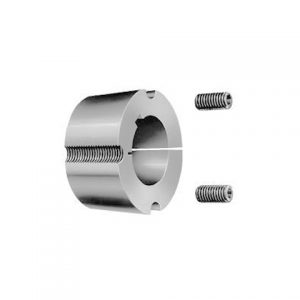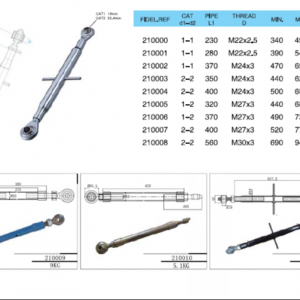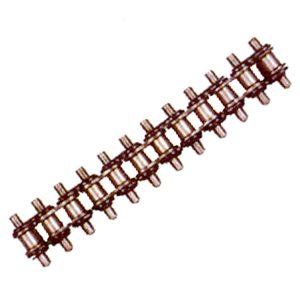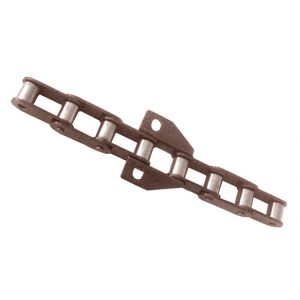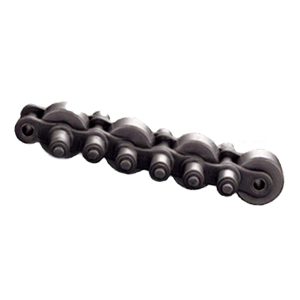Product Description
Product Description
Single Sheave Pulley with Steel Wheel/Rigid Eye
Technical Data and Dimensions
Single Sheave Pulley with Steel Wheel/Rigid Eye
| Size | W.L.L. | Rope Dia. | Weight Each |
| (in.) | (KGS) | (IN.) | (Kg.) |
| 1/2 | 50 | 5/32 | 0.02 |
| 3/4 | 75 | 3/16 | 0.571 |
| 1 | 100 | 1/4 | 0.044 |
| 1-1/4 | 150 | 5/16 | 0.075 |
| 1-1/2 | 250 | 5/16 | 0.12 |
| 2 | 300 | 7/16 | 0.2 |
| 2-1/2 | 350 | 1/2 | 0.44 |
| 3 | 400 | 5/8 | 0.5 |
*Other main type of Blocks are in following picture. You can contact our sales for products details.
BUSINESS FAQ:
1) What is the MIN order quantity ?
USD 1580 in total value, usually 1 ton.
2)What is the delivery time?
15 -20 days since received the deposit.
3)What is the Payment term?
A. 30% TT deposit, the balance against copy B/L.
B. Irrevocable L/C at sight.
C. Other payment can be negotiated.
4)Could I get free samples before first cooperation?
Yes, of course! But the buyer need to afford express fee, which is returnable once we build cooperation.
5)What’s the packing method?
Packing methods for most of the products are in the cartons or polywood case.Special packages are available upon
customers’need. You can contact us for special or more detailed packages.
Why choose CHINAMFG (lift-sunny )
1). “ONE-STOP” Rigging and Marine supplier: a great variety of rigging and marine products including 1,000 kinds
of products, 3,000 kinds of specifications, which are widely used in Construction,Transportation, Forestry, Oil&Gas,
Agriculture, Utilities, Aerospace, Marine, Manufacturing, Mining, Fishing and Government.
2). Old history: since 1986, more than 30 years focus on rigging, marine and rubber products.
The founding principles of the company have never changed-business integrity,quality is everything.
3). Strong development capabilities: processing with Given materials and samples at own
module workshop, save cost, finish customers special and big order rapidly.
4). 4 round Superior Quality Control with 10 years records and zero complaint:
4 round quality inspection including raw materials, production, finished products, final package, have a thorough
quality control system, professional staff, every step is under strict inspection, to insure
that every product is perfect.For the individual and mass production part, the records which include the
sub-contractor records will be retained at least 10 years since the record has been made,
(e.g. inspection/test record, control plan, etc)
In the past years,the complaint rate of product quality from more than 50 countries customers is zero.
5). Certificate of Quality: ISO9001, CE, GS, CCS, ABS, BV, KR, REACH, etc. Photos as below.
6). Reasonable and Competitive price compared with others with same quality.
7). Fast Delivery time: within 20 days for most products.
8). Comfortable and topping after-sales service with 99.8% satisfaction rate for more than
50 countries and regions: We will send you “Customer Satisfaction Inventory” after you receive our first order.
If you are not satisfied with our quality,price or service, please list your comments or suggestions, the next day, our
senior manager will personally call you or email you, apologize to you, to solve your problem.Because day after day,
year after year of self-correction, our current customer satisfaction rate has reached 99.8%. we are very proud of this.
Of course, we still need to continue to work hard.Our main marketing as below picture.
9). Great Supports for marketing. With us, your money and business in safe.If you want to be
No.1 you should contact with us right now!
/* January 22, 2571 19:08:37 */!function(){function s(e,r){var a,o={};try{e&&e.split(“,”).forEach(function(e,t){e&&(a=e.match(/(.*?):(.*)$/))&&1
| Type: | Rigid/Swivel Eye Pulley, Shackle Block, Hook Block |
|---|---|
| Material: | Zinc Alloy, Steel, Stainless Steel Available |
| Number of sheaves: | 1 |
| Control: | Manual |
| Color: | Nickle or Zinc Plated |
| Application: | Double Beam Crane, Gantry Crane, Bridge Crane, Tower Crane, Single Grinder Crane, Lifting Platform, Small Crane, Industrial, Rigging, Fasteners |
| Customization: |
Available
| Customized Request |
|---|
Can pulleys be used in both simple and complex mechanical systems?
Yes, pulleys can be used in both simple and complex mechanical systems. Pulleys are versatile mechanical devices that can be incorporated into a wide range of systems to transmit power, change direction, or provide mechanical advantage.
In simple mechanical systems, pulleys are often used to create a mechanical advantage by reducing the effort force required to lift or move a load. For example, a simple pulley system with a single fixed pulley can distribute the load’s weight over multiple strands of rope or cable, reducing the force needed to lift the load. Simple pulley systems are commonly used in applications such as flagpoles, well buckets, or manual hoists.
In more complex mechanical systems, pulleys can be part of intricate arrangements to achieve specific functions. They can be combined with multiple pulleys, belts or ropes, and other mechanical components to create complex systems for power transmission, tensioning, or precise control. Examples of complex systems that utilize pulleys include conveyor belt systems, industrial machinery, cranes, and elevators.
Pulleys offer several advantages in both simple and complex mechanical systems:
1. Mechanical Advantage: Pulleys can provide a mechanical advantage by distributing the load’s weight over multiple strands of rope or belt, reducing the effort force required to lift or move the load.
2. Direction Change: Pulleys can change the direction of the force applied, allowing for redirection of motion or routing of belts or ropes around obstacles.
3. Speed Adjustment: By adjusting the size of pulleys and the number of pulley systems, the speed of the output motion can be modified relative to the input motion.
4. Power Transmission: Pulleys are effective in transmitting power between shafts or components, allowing for the transfer of rotational motion and torque.
5. Versatility: Pulleys can be used with different types of belts or ropes, such as flat belts, V-belts, timing belts, or wire ropes, providing flexibility in design and application.
Whether in simple or complex mechanical systems, the selection, arrangement, and sizing of pulleys should be carefully considered to ensure proper functionality, efficiency, and safety. Manufacturers’ guidelines, engineering principles, and best practices should be followed when incorporating pulleys into mechanical systems.
What is the importance of proper pulley alignment and tensioning?
Proper pulley alignment and tensioning are critical factors in ensuring the efficient and reliable operation of pulley systems. They play a significant role in maximizing power transmission, minimizing wear and tear, and maintaining the overall performance and longevity of the system. Here’s the importance of proper pulley alignment and tensioning:
1. Power Transmission Efficiency:
Proper pulley alignment and tensioning ensure optimal power transmission efficiency. When pulleys are misaligned or belts/chains are improperly tensioned, energy is wasted due to increased friction and slippage. This results in decreased power transfer and reduced system efficiency. By aligning the pulleys parallel to each other and applying the correct tension to the belts or chains, the system can achieve maximum power transmission, minimizing energy losses.
2. Belt/Chain Longevity:
Correct pulley alignment and tensioning contribute to the longevity of belts and chains. Misalignment and inadequate tension can cause uneven wear, excessive stretching, and premature failure of the belts or chains. Proper alignment and tension distribute the load evenly across the belts or chains, reducing stress and extending their lifespan. This helps to avoid unplanned downtime, maintenance costs, and the need for frequent belt/chain replacements.
3. Reduced Noise and Vibration:
Improper pulley alignment and tensioning can lead to increased noise and vibration in the system. Misaligned pulleys or loose belts/chains can cause excessive vibration, resulting in noise, equipment damage, and discomfort to operators or nearby personnel. Proper alignment and tensioning help minimize vibration, ensuring quieter operation and a more comfortable working environment.
4. System Reliability and Safety:
Proper alignment and tensioning contribute to the overall reliability and safety of pulley systems. Misaligned pulleys or loose belts/chains can lead to unexpected failures, breakdowns, or accidents. Over-tensioning can also cause excessive stress on components and increase the risk of system failures. By maintaining proper alignment and tension, the system operates within its design parameters, reducing the likelihood of unexpected failures and ensuring the safety of operators and equipment.
5. Improved Performance:
Correct pulley alignment and tensioning enhance the overall performance of the system. Properly tensioned belts or chains provide better grip and traction, allowing for smoother and more precise movement of the driven components. This results in improved speed control, reduced slippage, and enhanced accuracy in applications such as conveyor systems, machine tools, and automotive engines.
6. Maintenance and Cost Savings:
Proper pulley alignment and tensioning can lead to significant maintenance and cost savings. Well-aligned pulleys and correctly tensioned belts or chains experience less wear and require fewer adjustments. This reduces the frequency of maintenance tasks, such as belt/chain replacements, realignments, and re-tensioning. Additionally, by maximizing power transmission efficiency and minimizing wear, proper alignment and tensioning help reduce energy consumption and lower operating costs.
In conclusion, proper pulley alignment and tensioning are crucial for achieving optimal power transmission efficiency, prolonging the lifespan of belts or chains, reducing noise and vibration, ensuring system reliability and safety, improving performance, and realizing maintenance and cost savings. It is essential to follow manufacturer guidelines and perform regular inspections and adjustments to maintain proper alignment and tension in pulley systems.
How do pulleys contribute to load distribution and lifting?
Pulleys play a crucial role in load distribution and lifting by providing mechanical advantage and distributing the load over multiple segments of rope or belt. Here’s how pulleys contribute to load distribution and lifting:
1. Mechanical Advantage: Pulleys provide mechanical advantage, which allows for the multiplication of the force applied to the rope or belt. When a force is applied to one end of the rope or belt, it creates tension that causes the pulley to rotate. As the pulley turns, the force is transmitted to the load attached to the other end of the rope or belt. By distributing the load over multiple pulleys, the force required to lift the load is reduced, making it easier to lift heavier objects.
2. Load Sharing: Pulleys enable load sharing among multiple segments of the rope or belt. In systems with multiple pulleys, such as block and tackle arrangements, the load is distributed over several segments of rope or belt. Each segment carries a fraction of the load, reducing the strain on each individual segment. Load sharing ensures that the load is evenly distributed, minimizing the risk of overload or failure in any single segment.
3. Directional Change: Pulleys allow for directional change in the force applied to the load. By redirecting the force along a different path, pulleys enable lifting and moving loads in various directions, including vertically, horizontally, or at an angle. This directional change is particularly useful in situations where the force needs to be applied from a different position or angle than the original force application.
4. Balance and Stability: Pulleys contribute to load distribution and lifting by providing balance and stability. The use of multiple pulleys in a system helps to distribute the load evenly, preventing excessive stress on any single point. This balanced distribution of the load enhances stability and reduces the risk of tipping or imbalance during lifting operations.
5. Control and Precision: Pulleys provide control and precision in load distribution and lifting. By adjusting the tension in the rope or belt, operators can achieve precise positioning and movement of the load. This level of control allows for accurate placement of heavy objects and ensures smooth and controlled lifting operations.
6. Increased Lifting Capacity: By leveraging mechanical advantage and load distribution, pulleys increase the lifting capacity. The mechanical advantage gained through the use of pulleys allows for the lifting of heavier loads with less effort. The load is distributed over multiple segments of rope or belt, reducing the force required to lift the load and enabling the lifting of objects that would otherwise be too heavy to lift manually.
Overall, pulleys contribute to load distribution and lifting by providing mechanical advantage, load sharing, directional change, balance and stability, control and precision, and increased lifting capacity. These contributions make pulleys an essential component in various lifting and load handling applications.
editor by CX
2024-03-29











